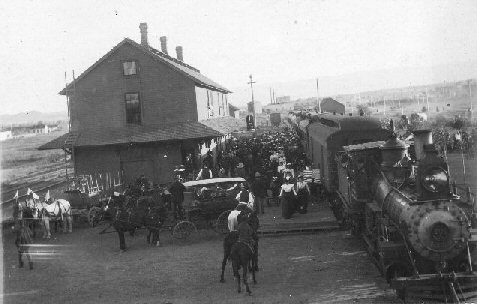A horse in Johnson County has been infected with Equine Herpesvirus neurologic disease according to the Wyoming Livestock Board veterinarian.
Laboratory results were received by Dr. Thach Winslow last Thursday.
The horse has been quarantined and it not known how the horse contracted the disease, but it had been involved in various college rodeo events held at the Gillette Camplex and the Goshen County Fairgrounds during the month of March.
If any horse in the Johnson County area begins to show neurologic signs or a fever, the animal should be isolated and the owner should contact a local veterinarian.
The full press release is shown below…
Wyoming Livestock Board 1934 Wyott Drive Cheyenne, WY 82002 Contact Information: Wyoming State Veterinarian, Dr. Jim Logan, 307-857-4140 April 5, 2019 ********FOR IMMEDIATE RELEASE********
EHV-1 infected horse reported in Johnson County Laboratory confirmation of a Johnson County horse infected with Equine Herpesvirus neurologic disease, or Equine Herpes Myeloencephalopathy (EHM), was received by Wyoming Livestock Board (WLSB) staff veterinarians on Thursday, April 4. The horse has been quarantined to its premise in Johnson County with 19 other horses. The affected horse began showing neurologic signs, including hind-end weakness, on Wednesday, April 3. It is not known where this horse contracted the disease, but it had been at college rodeo events on March 15-16 at the Cam-plex in Gillette and March 21-24 at the Goshen County Fairgrounds in Torrington. Dr. Thach Winslow, Wyoming assistant state veterinarian for field operations, said that any horses that were at these events should be considered potentially exposed, and owners should consider taking preventative measures, including close monitoring of the horses and checking their temperatures at least twice daily. If any of these horses show neurologic signs or fever, the owner needs to isolate them and contact his/her veterinarian for advice and treatment options. According to WLSB staff veterinarians, equine herpesviruses are very common DNA viruses in horse populations worldwide. The great majority of horses are exposed to EHV1 – the virus that causes EHM – early in life and will become life-long latently infected, meaning they will show no external signs of illness. However, the virus can be reactivated during times of stress such as strenuous exercise, over-exertion, long-distance transport, or at weaning. Horses with neurological disease caused by EHV1 infection can soon become uncoordinated and weak and have difficulty standing, urinating, and/or defecating. Often the rear limbs are more severely affected than the front. Signs of brain dysfunction may occur as well, including extreme lethargy and a coma-like state. The disease is contagious and can be spread by direct horse-tohorse contact; by contaminated hands, equipment, and/or tack; and, for a short time, through aerosol dissemination within the environment of the stall and stable. There has been a marked increase in the number of EHV1/EHM cases in the U.S. in recent years. In the last 30 days, cases have been reported at large horse facilities and events in several states including Idaho, Arizona, Nevada and California. Owners who plan on taking their horses to such facilities and events can help prevent spread of the disease by practicing proper biosecurity measures. This includes not sharing equipment such as water/feed buckets and tack. They should also isolate their horses if they suspect them of being sick, and not allow them to leave the premise until cleared by a veterinarian.
More information on Equine Herpes Virus can be obtained by contacting the Wyoming Livestock Board Field Office at 307-857-4140.




